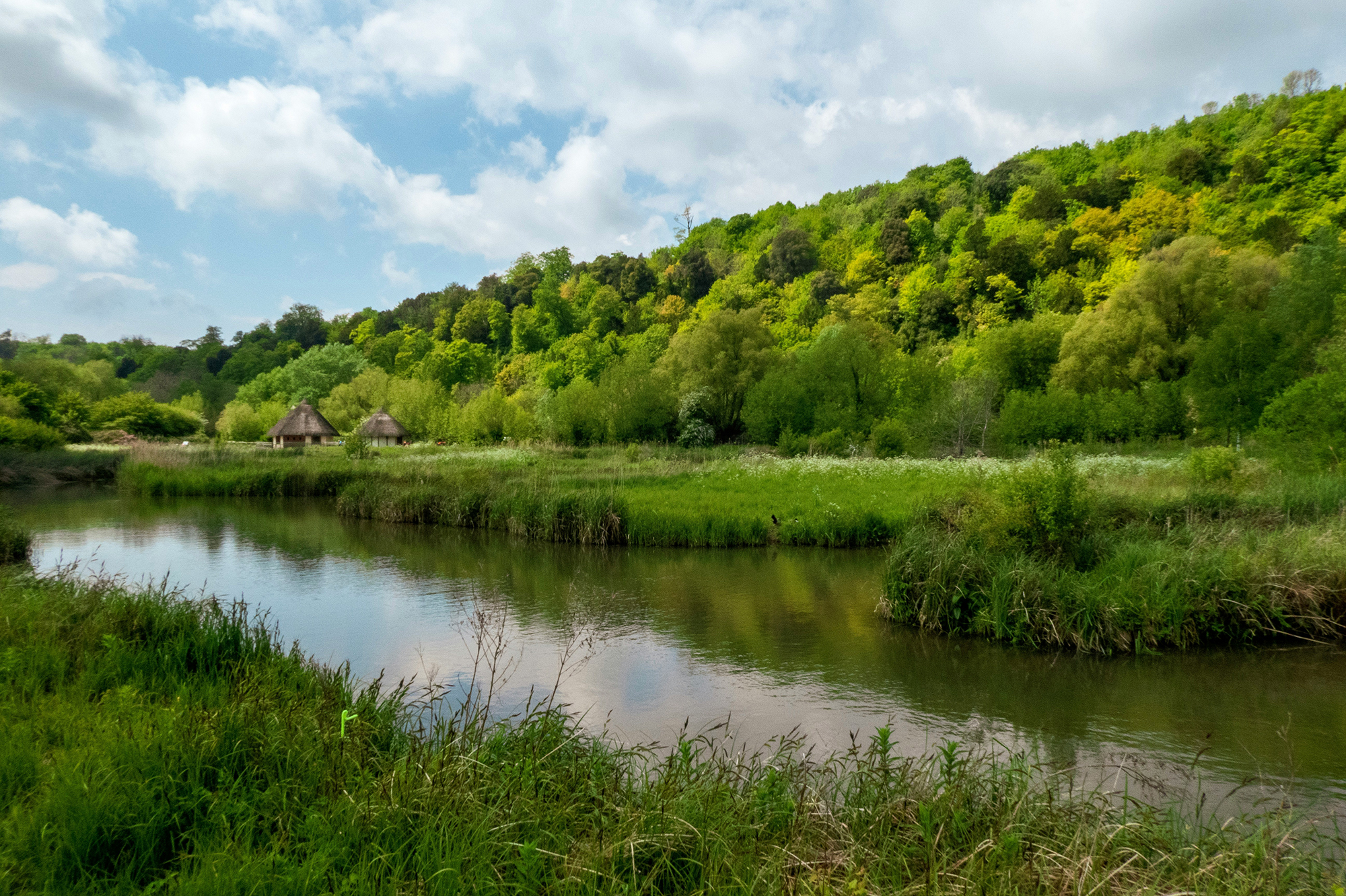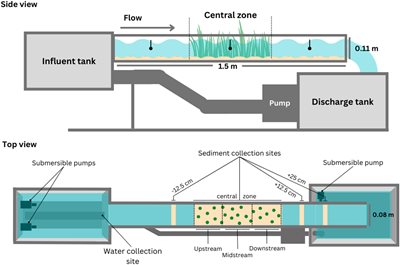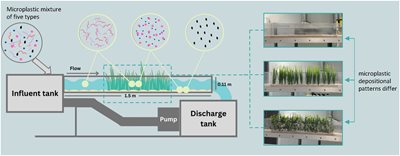Story
Microplastic shape influences fate in vegetated wetlands
24 February 2024
New study shows that the shape of microplastics influence their trapping in coastal vegetated habitats, and adds to the growing knowledge base of accumulated microplastic hotspots in these environments.

Nick Fewings | Unsplash
Coastal vegetated habitats, such as seagrass meadows, saltmarshes and mangroves, are well known for their beneficial ecosystem services. They provide protection from erosion, offer wildlife refuge and have huge potential as a carbon store but now they may have an additional function: trapping marine microplastics (plastic particles less than 5 mm in size).
While microplastics occurrence in coastal vegetated sediments is well documented, there is conflicting evidence on whether the presence of vegetation enhances microplastics trapping relative to bare sites, and the factors that influence microplastic trapping remain understudied.
In this study, the team investigated how vegetation structure, such as branched and grassy vegetation, and microplastic shape, size and material influences trapping in a simulated coastal wetland.

The laboratory experiments showed that:
- The presence of vegetation did not affect the number of microplastics trapped but did affect location of deposition.
- Microplastic shape, rather than material, was the dominant factor in determining whether microplastics were retained in the sediment or were caught in the vegetation canopy.
- Fibres were found in greatest abundance in the water and adhered to plants, whereas flakes were observed adhered to plants and deposited in sediment, and fragments were primarily found in the sediment.
- Across the canopy, microfibre concentrations decreased from the leading edge to the interior, which suggests that even on a small-scale, vegetation has a filtering effect.

Previous studies have considered that plants act to slow the water flow, allowing microplastics to settle out. In this experiment, whilst the grass treatment did slow the water flow within the canopy, it may not have been sufficient to increase microplastic settlement. This suggests that increased trapping requires more than just the presence of vegetation, with factors such as vegetation canopy size, canopy density, biological coverage on plant blades and sediment bed roughness being important.
This work is a first step at isolating specific variables that could be driving microplastic trapping in vegetated canopies, though there are many other drivers being explored. Water flow conditions in the field are more complex and multidirectional whereas flow within the experiment is restricted to a single direction. While these types of laboratory experiments are important for determining specific drivers of microplastic trapping on a fine scale, across larger spatial and temporal scales, other driving forces may have a greater influence on microplastic trapping than those observed here, for instance, changes in water depth and velocity across tidal periods creates variable flow patterns and more dynamic conditions.
Hayley McIlwraith, lead author on the study and PhD student at Plymouth Marine Laboratory and the University of East Anglia, commented:
“Coastal wetlands may be important sinks and sources of microplastics between the land and sea. By examining how these unique habitats trap microplastics, we can better understand their role in the global plastics cycle and help inform clean-up strategies”.
Associate Professor Trevor Tolhurst, lecturer in Coastal Processes at the University of East Anglia and co-author on the study, added:
“Knowing that the shape of a plastic particle is the dominant factor in determining where that particle eventually ends up is vital for understanding how different types of microplastic move through the environment. The differences in how they move compared to natural sediment particles is also key for including microplastics in models of sedimentary dynamics".
Related information
Full paper: Microplastic shape influences fate in vegetated wetlands